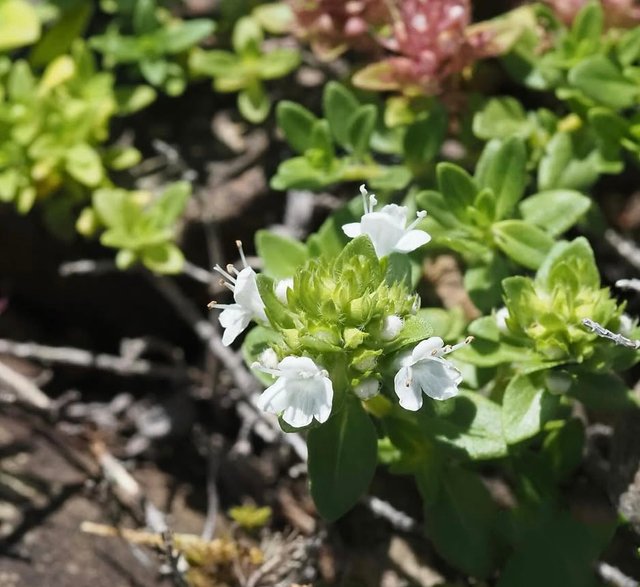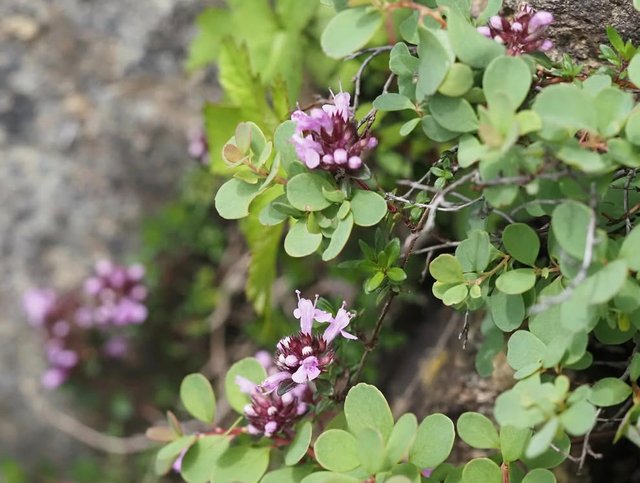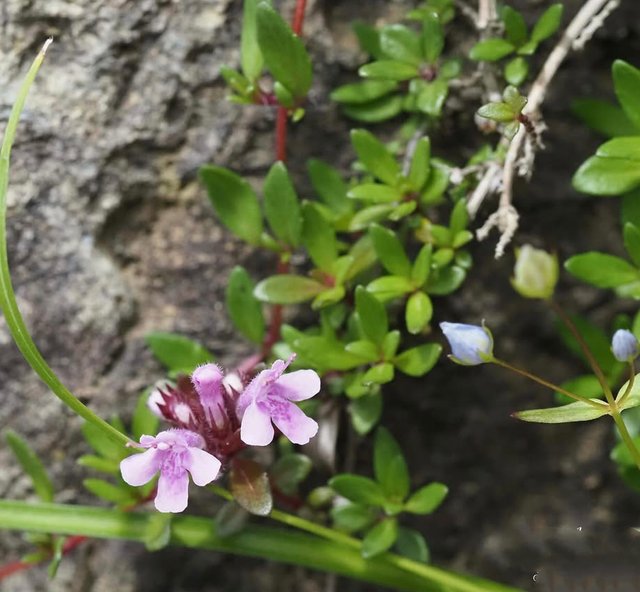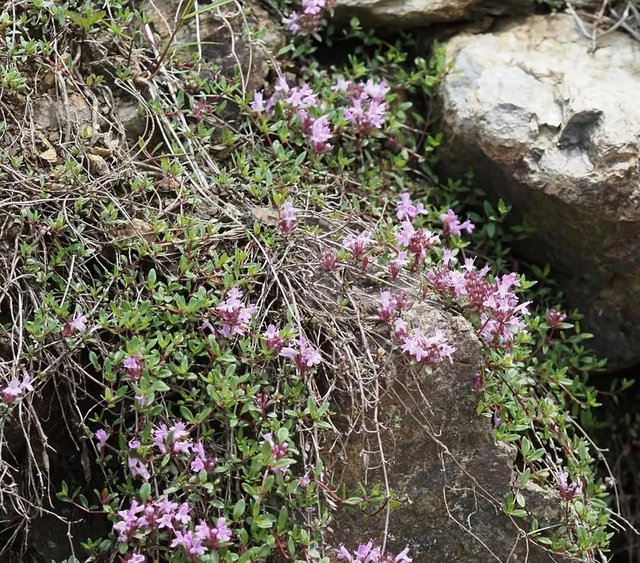Thymus carnosus Flower
Thymus carnosus flower is native to the Iberian Peninsula, particularly in coastal sandy soils and rocky habitats of Portugal and southern Spain where it thrives in warm Mediterranean climates. It is a low-growing, evergreen perennial herb that forms dense mats or cushions, with small, leathery, aromatic leaves that release a pleasant fragrance when crushed. The flowers, which usually bloom from late spring to early summer, are small, tubular, and typically pink to purple in color, arranged in whorls or clusters at the tips of stems, attracting pollinators like bees, butterflies, and other beneficial insects. Thymus carnosus plays an important ecological role in stabilizing sandy soils and providing nectar sources in dry and nutrient-poor environments, making it a valuable plant for biodiversity in its native range.
Beyond its ecological significance, it also holds ornamental value as a groundcover plant in gardens due to its drought tolerance, aromatic foliage, and attractive blooms. Like other thyme species, it contains essential oils that give it a distinct fragrance and potential medicinal properties, with uses in traditional herbal remedies for respiratory and digestive health, although it is less commonly used in cooking compared to culinary thyme.
Conservation efforts are important for Thymus carnosus because it is considered vulnerable in some areas due to habitat loss, overgrazing, and urban development, highlighting the need for protection of Mediterranean coastal ecosystems where it naturally grows.Its ability to withstand harsh conditions, poor soils, and dry climates makes it a symbol of resilience in Mediterranean flora, and it remains both a botanical curiosity and a valuable plant for ecological restoration, landscaping, and herbal traditions.



